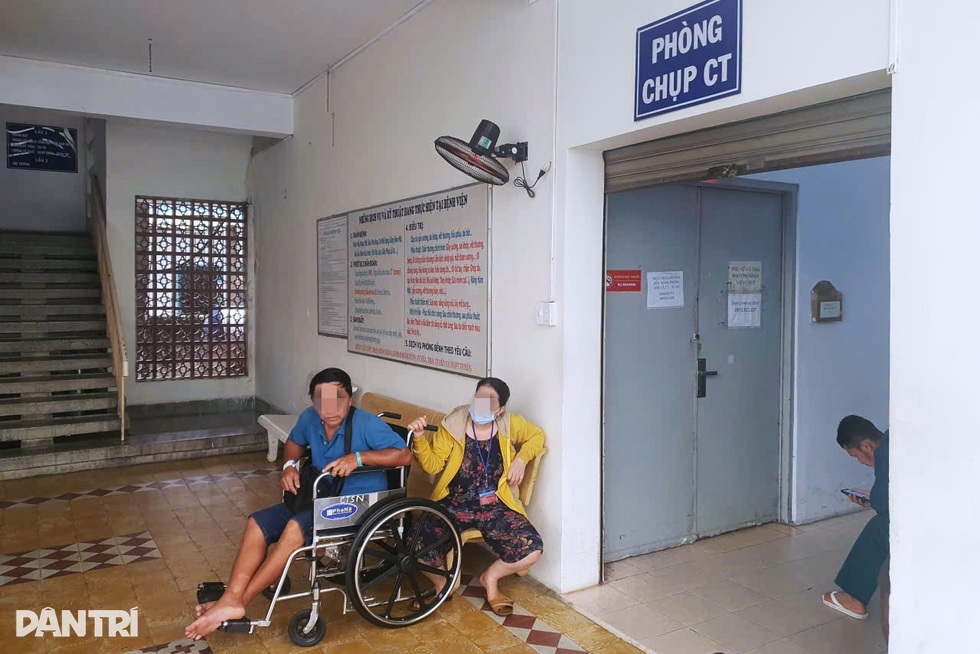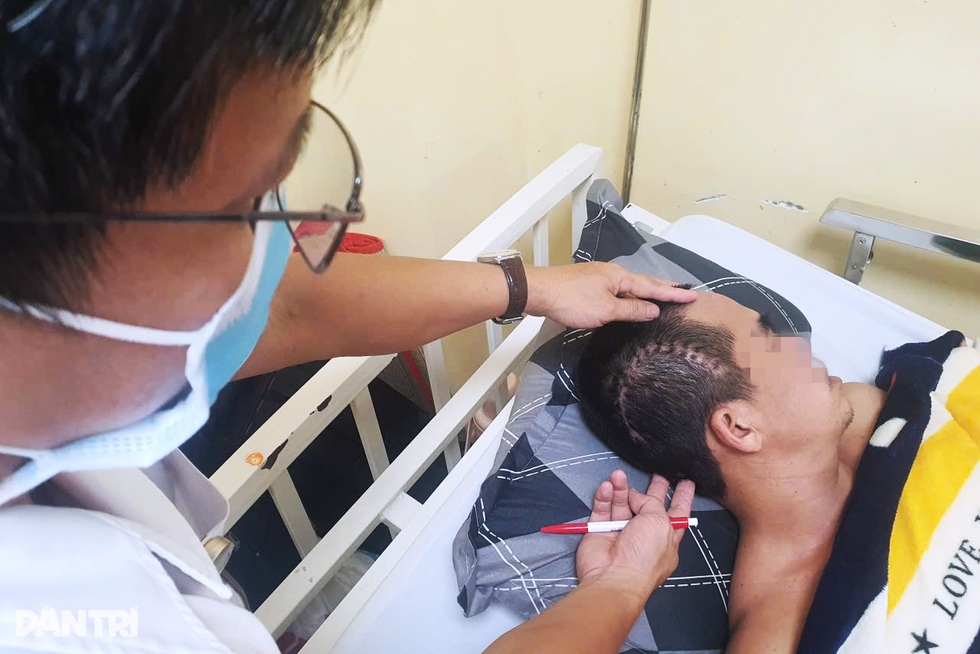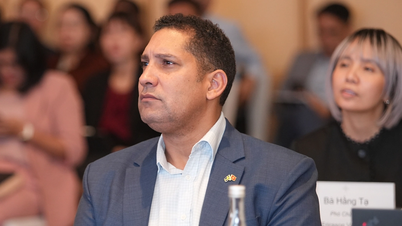Regarding the Ministry of Health's proposal to rearrange and reorganize affiliated public service units, recently Ho Chi Minh City Orthopedic and Rehabilitation Hospital (1A) and Can Tho Orthopedic and Rehabilitation Hospital (2 facilities expected to be merged into other units) have spoken out.
Specifically, Hospital 1A proposed to remain an independent unit under the Ministry of Health until 2027, after which it would become a teaching hospital under the Ho Chi Minh City University of Medicine and Pharmacy. Meanwhile, the Can Tho Orthopedic and Rehabilitation Hospital hopes for a roadmap to transfer its status to the local government in the period 2028-2030.
In the northern region, the Ministry of Health's proposal to transfer E Hospital to become a subsidiary of Bach Mai Hospital – forming a hospital chain model – has also attracted much attention and sparked opinions from the medical community and the public.
A reporter from Dan Tri newspaper had a conversation with Associate Professor Do Van Dung, former Vice Rector and member of the Board of Directors of Ho Chi Minh City University of Medicine and Pharmacy, to gain further professional perspective on the aforementioned issue.

Associate Professor Do Van Dung, former Vice Rector, Ho Chi Minh City University of Medicine and Pharmacy (Photo: Hospital).
Key conditions for a successful merger or reorganization.
Recently, the Ministry of Health proposed a plan to reorganize its affiliated public service units through various methods such as mergers, integration into other units, or transfer of the entire structure to local authorities. What is your assessment of this?
- The policy of reorganizing and merging healthcare units is necessary and in line with the trend of streamlining the organizational structure and enhancing the autonomy of public service units. From a management perspective, key conditions must be ensured for the merger to be successful.
First, personnel stability and integration are crucial. This is the deciding factor in the success or failure of any merger.
The restructuring or merger of hospitals needs to address the integration of organizational cultures, through thoroughly resolving cultural conflicts between the old units (culture with patients, culture of applying medical advancements). A unified quality culture centered on the patient should be built.
In addition, personnel must be allocated fairly, ensuring job stability, positions, and benefits for competent healthcare professionals, avoiding dissatisfaction and brain drain.
Secondly, select appropriate units for merger to improve efficiency and professional quality.
Suitable factors include: Optimal scale and rational function (so that the new unit can achieve economic advantages, focus resources on developing specialized expertise, but at the same time avoid becoming a cumbersome, overloaded "super hospital");
Maximizing resources (by consolidating expertise, making the most of facilities and technological equipment, and improving diagnostic and treatment efficiency).
Third, the legal, governance, and technological framework.
Regulations regarding the merger of public service units must be strictly implemented, including procedures for reissuing or adjusting operating licenses. Simultaneously, an effective and flexible governance model must be developed, and information technology (IT) must be applied to integrate the management systems (HIS, EMR) of the former hospitals. This will help control quality and operational efficiency in the new scale.

The Ministry of Health has proposed merging several specialized rehabilitation hospitals (Photo: Hoang Le).
According to the document on the plan for rearranging and reorganizing affiliated public service units, the Ministry of Health proposes that 25 out of 39 hospitals continue to be under the Ministry's direct control.
Specifically, the leading hospitals that continue to be under the Ministry of Health are Bach Mai Hospital, K Hospital, Viet Duc Hospital, Central Children's Hospital, Central Obstetrics and Gynecology Hospital, Cho Ray Hospital, and Hanoi Central Dental and Maxillofacial Hospital…
Two hospitals have been proposed for merger into other units: Can Tho Orthopedic and Rehabilitation Hospital (merging into Can Tho General Hospital) and Ho Chi Minh City Orthopedic and Rehabilitation Hospital (merging into Thong Nhat Hospital).
Meanwhile, Hospital E is expected to become a facility under Bach Mai Hospital, forming a hospital chain model. In addition, many specialized hospitals are proposed to be transferred intact to local authorities.
In addition, the Ministry of Health also proposed transferring some hospitals to become teaching hospitals for medical schools. For example, the Da Nang Orthopedic and Rehabilitation Hospital would be transferred to the Da Nang University of Medical Technology, and the Central Hospital 71 and the Central Rehabilitation and Nursing Hospital would be transferred to Hanoi Medical University.
With a system for prevention and testing, the Ministry of Health proposes that the Central Institute of Hygiene and Epidemiology continue to be under the Ministry's direct control, performing the functions of the Central CDC. The National Institute of Nutrition, the National Institute of Occupational and Environmental Health, and the National Institute of Malaria, Parasitology, and Entomology will be merged into the Central Institute of Hygiene and Epidemiology.
In the South, the Ho Chi Minh City Institute of Malaria, Parasitology and Entomology and the Ho Chi Minh City Institute of Public Health are proposed to be merged into the Pasteur Institute of Ho Chi Minh City...
There has been much discussion surrounding the proposal to merge or become part of a larger hospital with a long history, financial autonomy, and expertise. How does the associate professor view this?
- Hospitals with high professional competence, long-standing traditions, and effective financial autonomy have typically established a strong and sustainable organizational culture. Their staff usually adhere well to organizational regulations, have a respectful and friendly attitude towards patients, and are always seeking out new medical advancements to apply to patient care.
These hospitals also typically have modern management systems, so when merging with smaller hospitals, integrating the organizational cultures of the two former units usually presents no obstacles.
Obstacles only arise when a hospital with specialized expertise merges with a larger hospital that is weak in both management and expertise, and the personnel arrangement process is not fair.

Trends in modern healthcare
In the proposed restructuring of hospitals under the Ministry of Health, several main options are evident. These include transferring them to local management, transforming them into teaching hospitals following the "hospital-university" model, or merging them into central general hospitals or large-scale units.
According to the Associate Professor, which approach is most suitable for the development of the medical field in the new situation?
- As analyzed above, organizational culture compatibility is a decisive factor when choosing a merger method. Therefore, any method could be appropriate in each specific circumstance.
If a specialized hospital has a long tradition of cooperation with the university, appoints university lecturers to its leadership structure, and its medical staff are already cultured in applying medical advancements in patient care and actively involved in teaching practical skills to students and trainees, then transforming it into a "university-institutional" teaching hospital is entirely reasonable.
This approach also aligns with the trend in modern healthcare: specialization and the integration of training and research.

Hospital 1A proposes to be converted into a practical training facility for the Ho Chi Minh City University of Medicine and Pharmacy during the period 2028-2030 (Photo: Hoang Le).
If a hospital has never collaborated with a university but has a professional partnership with a local general hospital that shares a similar management culture, and that general hospital does not have a specialized department of the merged unit (or the department is weak), then merging with the general hospital is reasonable, optimizing the care chain and improving operational efficiency.
Alternatively, if the existing specialized hospital has certain strengths but its work culture is not compatible with other local healthcare units, and the merger would lead to organizational overlap or overcrowding, then temporarily entrusting its management to the provincial/city government without the merger is also a suitable option.
Thank you for your insights, Associate Professor!
What did the former Director of the Ho Chi Minh City Department of Health say?
Speaking with a reporter from Dan Tri newspaper , Dr. Nguyen The Dung, former Director of the Ho Chi Minh City Department of Health, said that the Ministry of Health's restructuring and mergers must meet three criteria: "Quality - Effectiveness - Efficiency".
He analyzed that depending on the management level of each locality, there should be appropriate plans for arranging and merging units. In particular, the Ministry of Health needs to ensure that its functions of state management and strategic and policy advice to the central government are concentrated. Therefore, it needs to retain a number of large-scale public service units to monitor and direct in terms of expertise, instead of directly managing too many hospitals.
Dr. Dung cited the example that, when he was the head of the Ho Chi Minh City Department of Health, he proposed that Tu Du Hospital remain under the Department of Health's management instead of being placed under the Ministry of Health's administration.
Simultaneously, he also submitted a proposal to the city leadership suggesting that all (former) district-level hospitals be transferred back to district-level management, as the Department of Health at that time was already managing more than 30 city-level hospitals. This proposal was subsequently approved.
The former Director of the Ho Chi Minh City Department of Health also stated that the "hospital-university" model is a fundamental model of the healthcare system (including hospitals affiliated with universities and "university hospitals"), and therefore he strongly agrees with the direction towards building this model.
The construction of a "university hospital" is a very persistent, gradual process, meeting many criteria. Firstly, it must be a place for practical training from the moment students first enter the university until they have mastered their skills. Secondly, it must be the highest level of treatment (the final stage for patients). And thirdly, a "university hospital" must be a hub for the pinnacle of scientific research (some of which have won Nobel Prizes).
"Vietnam currently lacks a network of family doctors and a university hospital of adequate caliber. To address these bottlenecks hindering healthcare development, we must implement these two models," Dr. Nguyen The Dung stated.
Source: https://dantri.com.vn/suc-khoe/chuyen-gia-nganh-y-noi-ve-de-xuat-sap-xep-sap-nhap-benh-vien-cua-bo-y-te-20251022232025751.htm


![[Photo] Prime Minister Pham Minh Chinh receives Lao Minister of Education and Sports Thongsalith Mangnormek](/_next/image?url=https%3A%2F%2Fvphoto.vietnam.vn%2Fthumb%2F1200x675%2Fvietnam%2Fresource%2FIMAGE%2F2025%2F12%2F16%2F1765876834721_dsc-7519-jpg.webp&w=3840&q=75)
![[Photo] Prime Minister Pham Minh Chinh receives the Governor of Tochigi Province (Japan)](/_next/image?url=https%3A%2F%2Fvphoto.vietnam.vn%2Fthumb%2F1200x675%2Fvietnam%2Fresource%2FIMAGE%2F2025%2F12%2F16%2F1765892133176_dsc-8082-6425-jpg.webp&w=3840&q=75)
![[Live] 2025 Community Action Awards Gala](/_next/image?url=https%3A%2F%2Fvphoto.vietnam.vn%2Fthumb%2F1200x675%2Fvietnam%2Fresource%2FIMAGE%2F2025%2F12%2F16%2F1765899631650_ndo_tr_z7334013144784-9f9fe10a6d63584c85aff40f2957c250-jpg.webp&w=3840&q=75)


![[Image] Leaked images ahead of the 2025 Community Action Awards gala.](/_next/image?url=https%3A%2F%2Fvphoto.vietnam.vn%2Fthumb%2F1200x675%2Fvietnam%2Fresource%2FIMAGE%2F2025%2F12%2F16%2F1765882828720_ndo_br_thiet-ke-chua-co-ten-45-png.webp&w=3840&q=75)





































































![[Live] Closing Ceremony and Award Presentation for the "Impressive Vietnam Tourism" Video/Clip Creation Contest 2025](https://vphoto.vietnam.vn/thumb/402x226/vietnam/resource/IMAGE/2025/12/17/1765974650260_z7273498850699-00d2fd6b0972cb39494cfa2559bf85ac-1765959338756946072104-627-0-1338-1138-crop-1765959347256801551121.jpeg)































Comment (0)